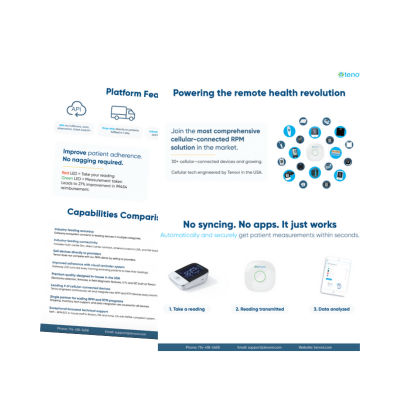By Brandon Haag — In this article, Brandon Haag, VP of Remote Therapeutic Monitoring (RTM) Solutions at Tenovi, examines 4 ways to expand remote monitoring for America’s veterans. America’s veterans have earned more than gratitude. They deserve healthcare that meets them where they are, with dignity, precision, and compassion. Remote patient monitoring (RPM) and remote therapeutic monitoring (RTM) offer powerful tools to support chronic care, improve outcomes, and extend the reach of clinical teams. But delivering remote monitoring services to veterans requires more than technology. It demands alignment across policy, infrastructure, and purpose.
As we modernize care delivery, we must ensure that the very people who defended our freedoms are not left behind as digital health technology moves forward. This article explores how remote patient monitoring and remote therapeutic monitoring can expand healthcare access for U.S. veterans by navigating the Department of Veterans Affairs (VA), TRICARE, and TriWest coverage pathways.
Understanding the Coverage Landscape
While the Department of Veterans Affairs (VA), TRICARE, and TriWest deliver care to veterans, their approaches to RPM and RTM coverage differ significantly. The distinctions between these frameworks determine which services can be offered, how they’re reimbursed, and what pathways exist to expand access for those who served.
VA Health System: RPM Only
The Department of Veterans Affairs provides RPM through its Home Telehealth Program, allowing veterans to track vitals such as blood pressure, glucose, and oxygen levels from home. These devices transmit data to care coordinators who escalate concerns to clinical teams. However, RTM—used for monitoring medication adherence, musculoskeletal recovery, and behavioral health—is not currently covered under VA policy.
TRICARE: RPM and RTM Covered
TRICARE, the Department of Defense’s (DoD) health program for active-duty members, retirees, and dependents, includes both RPM and RTM CPT codes in its reimbursement framework. This opens the door for broader monitoring capabilities across its network, including therapeutic adherence and behavioral health support.
TriWest: Administrator, Not Policymaker
TriWest Healthcare Alliance serves as a third-party administrator for certain TRICARE regions and contracts with the VA under the Community Care Network (CCN). It follows coverage rules set by the VA or DoD, meaning service eligibility depends on the originating payer.
How to Deliver RPM/RTM to Veterans
Implementing remote patient monitoring and remote therapeutic monitoring for veterans requires integrating with VA telehealth systems to leverage TRICARE reimbursement pathways and Community Care Network partnerships. Successful delivery depends on meeting veterans where they are, both clinically and technologically.
The following outlines 4 ways healthcare organizations and vendors can expand RPM and RTM access effectively across veteran populations.
1) Leverage VA’s Existing Infrastructure
RPM programs must integrate with VA workflows and technology standards.
That means:
- Using cellular-enabled devices (no apps or Wi-Fi required)
- Supporting VA-approved conditions like hypertension, COPD, and diabetes
- Providing real-time dashboards and escalation protocols for care coordinators
2) Expand RTM Through TRICARE Pathways
For veterans eligible under TRICARE, RTM can be deployed for:
- Medication adherence (e.g., smart pillboxes)
- Musculoskeletal recovery (e.g., activity tracking)
- Behavioral health support (e.g., mood and sleep monitoring)
3) Partner Through the Community Care Network (CCN)
Vendors can contract with TriWest or other CCN administrators to deliver RPM services to VA patients. Success requires:
- VA provider referral and clinical justification
- Device compatibility with VA systems
- Clear documentation of outcomes and engagement
4) Educate Providers and Care Teams
Veterans often rely on their care teams to guide technology adoption. Educational outreach should:
- Clarify RPM vs RTM use cases
- Highlight reimbursement pathways
- Emphasize ease of use and patient empowerment
The Opportunity Ahead
Veterans represent the best of our nation and are deserving of care that reflects their service. RPM and RTM, when designed for simplicity and scale, can close care gaps and improve outcomes. But success hinges on aligning with coverage rules, integrating with care teams, and delivering measurable impact.
By bridging VA and TRICARE pathways, we can ensure that remote monitoring is available, accessible, effective, and veteran-centered. This is more than innovation; it’s a promise kept.





